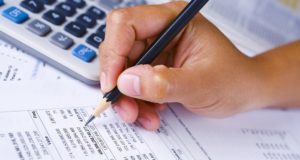 The future of our economy is in the hands of those who played a large role in causing it to unravel. The Federal Reserve tripled our money supply from $830 billion to $2.5 trillion with the first round of quantitative easing (QE1) last year. They bought up hundreds of billions of dollars in toxic debt, which served to subsidize billionaires and make our credit-stingy financial institutions flush with freshly printed greenbacks, more akin to counterfeit money than to real wealth. Now they’re doing it again.
The future of our economy is in the hands of those who played a large role in causing it to unravel. The Federal Reserve tripled our money supply from $830 billion to $2.5 trillion with the first round of quantitative easing (QE1) last year. They bought up hundreds of billions of dollars in toxic debt, which served to subsidize billionaires and make our credit-stingy financial institutions flush with freshly printed greenbacks, more akin to counterfeit money than to real wealth. Now they’re doing it again.
This powerful monster of a central bank, created in 1913, has been given free rein and authoritarian autonomy over our money supply and interest rates, but the spirit of the Tea Party and the recent mid-term elections may result in an effort to reel in the Fed’s independence and overreach. People on Main Street are fed up with trillion-dollar bailouts, out-of-control deficit spending, a trillion-dollar health care entitlement, and stringent regulations on everything except the Fed and the big-spending government.
The new round of QE2 is supposedly going to inject another $600 billion into the money supply by printing more money to buy our own debt. However, as we are not allowed to audit the Fed’s books, we have no way of knowing how much is really being printed. One has to wonder if we are wise to follow the path of the Pre-Nazi Weimar Republic and the recent scenario in Zimbabwe to solve our economic problems. Our central bank seems to be writing a prescription for runaway inflation.
Congressman Ron Paul has long called for the dissolution of the Federal Reserve system, and now he is joined by a freshman class of some seventy new congressmen and senators with marching orders from the rank and file citizens and Tea Partiers to clamp down on government expansion, roll back spending, end this financial crisis, and restore common sense and accountability in Washington.
There are those who believe that the Fed did the right thing by aggressively acting to prevent a financial collapse. But the newly empowered legislators seem to prefer the interpretation that this kind of action is just postponing and worsening the inevitable. Continuing our long walk down a short pier on an extension made of paper will only put us into deeper water when reality can no longer be avoided.
Ron Paul, now in the House majority, seems to be the destined chair of the committee that oversees the central bank that he longs to terminate, but whether he will have the support to go that far remains to be seen. However, it does seem likely that increased transparency is in the offing. The Fed has steadfastly resisted attempts at congressional review and audits, presumptively because they fear that their economic wisdom would be compromised by politics. In an administration that already steers the economy with social policy rather than sound economic strategy, some would say that politicized economic policy would be preferable to socialized economic policy.
As long as “Let’s tax the rich more” keeps coming before “How can we cut spending?” “How much tax revenue do we need to collect?” and “How can we use tax policy to stimulate productivity and job creation in the private sector?” the lessons of history would lead us to believe that we can have no satisfactory recovery. The length of this crisis and the fate of this administration will be determined in the next few months, as we see what concessions the administration is willing to make to the newly anointed legislators and how much power they can put behind their pledge and their directive from the American people.
 Off The Grid News Better Ideas For Off The Grid Living
Off The Grid News Better Ideas For Off The Grid Living



